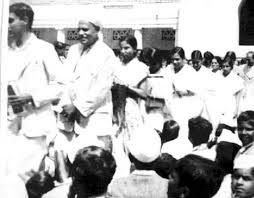The Surat Session of the Indian National Congress took place in December 1907 in Surat, Gujarat. This session is notable for the significant ideological conflict that occurred within the Congress party, marking a turning point in the Indian independence movement.

Table of Contents
Background
The Indian National Congress was formed in 1885 to seek a greater role for Indians in governing their own country under British rule. By the early 20th century, it had become the main organization advocating for Indian independence.
Within the Congress, there were two main factions: the Moderates, led by figures like Dadabhai Naoroji and Gopal Krishna Gokhale, who advocated for gradual constitutional reforms and collaboration with the British government, and the Extremists, led by Bal Gangadhar Tilak, Lala Lajpat Rai, and Bipin Chandra Pal, who demanded more radical action and were more confrontational towards British rule.
Split at Surat Session
The Surat Session was convened to reconcile the differences between the Moderates and the Extremists. However, the session ended in a split when disagreements between the two factions of the Congress party reached a breaking point. The Extremists demanded complete independence (Swaraj), while the Moderates were not willing to go that far.
"The Extremists demanded complete independence (Swaraj), while the Moderates were not willing to go that far."
Chairmanship Controversy
The split was accelerated by a controversy over the election of the Congress President for the session. The Extremists supported the candidature of Bal Gangadhar Tilak, while the Moderates favored Rash Behari Ghosh. When the Congress President, Dadabhai Naoroji, tried to mediate the dispute, he was met with strong opposition, leading to chaos and finally the adjournment of the session.
Aftermath of Surat Session
The Surat Session marked a clear division within the Congress party between the Moderates and the Extremists. This division would persist for many years, with the two factions pursuing different strategies towards achieving Indian independence. The split also highlighted the growing radicalization of the movement and the increasing dissatisfaction with British rule.
Overall, the Surat Session of the Indian National Congress is marked as a significant event in the history of the Indian independence movement, signaling the emergence of radical and confrontational approaches to achieving freedom from British colonial rule.